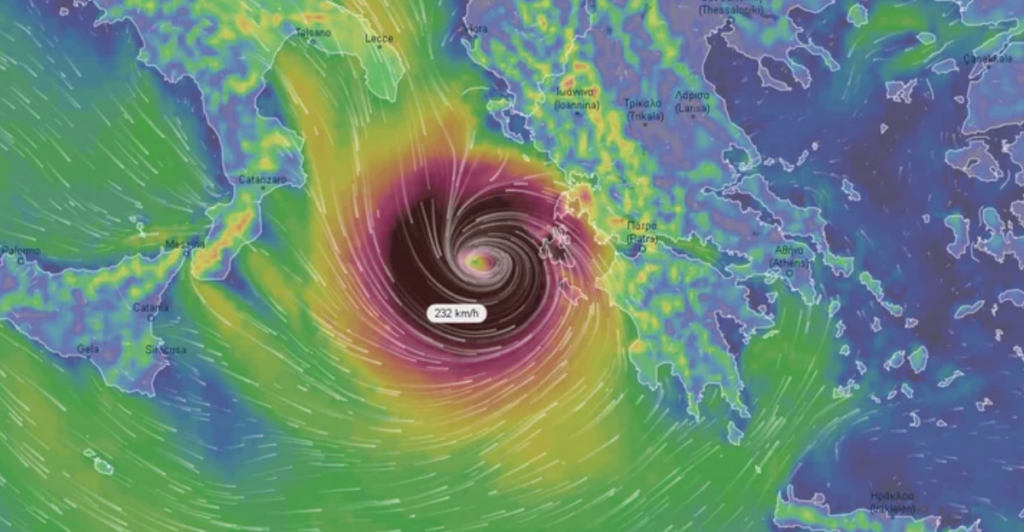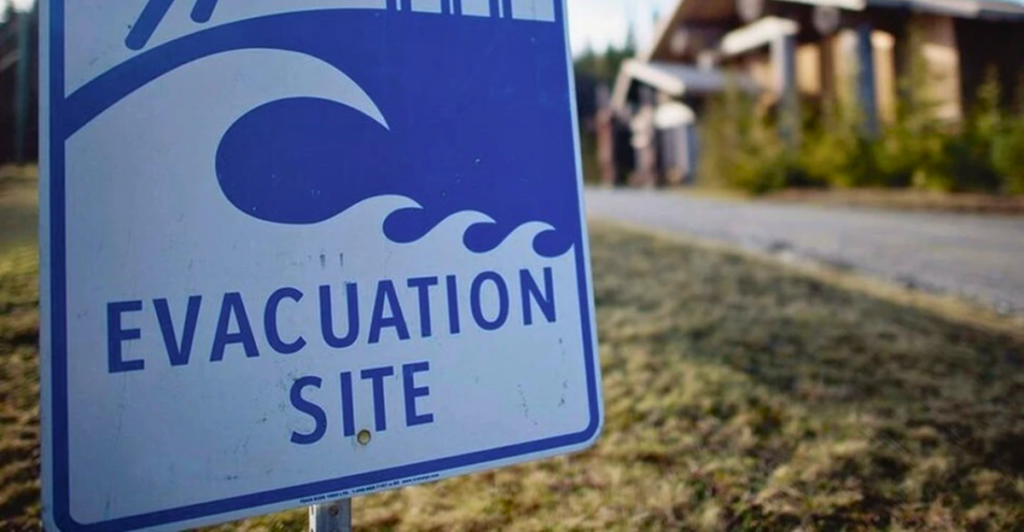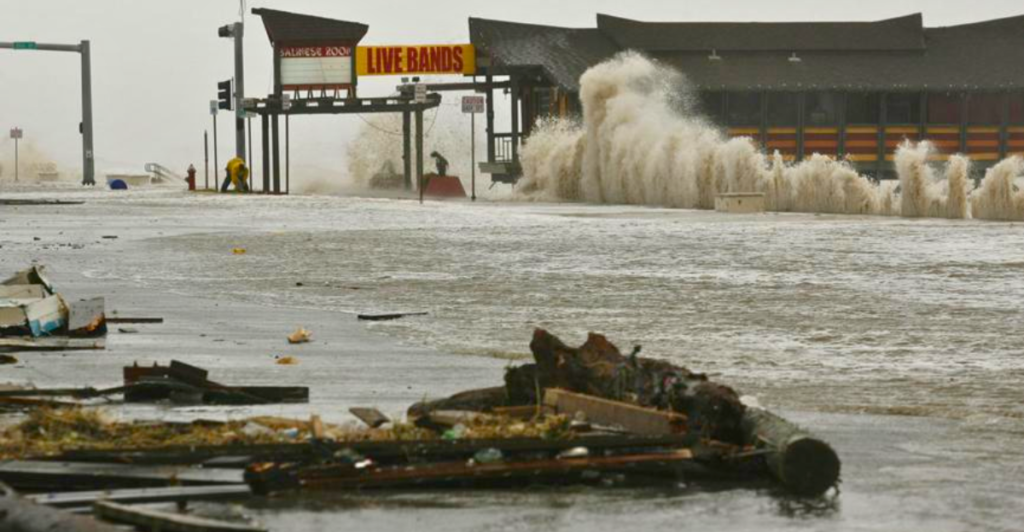
The Mediterranean Sea has emerged as a focal point of climate concerns in 2024, with scientists warning that it may act as a “climate time bomb” capable of disrupting global weather systems. According to the latest data from the European Centre for Medium-Range Weather Forecasts (ECMWF), the Mediterranean Sea has warmed 1.6°C above pre-industrial levels, surpassing global averages. Sea surface temperatures this summer broke records, consistently exceeding 30°C (86°F) in parts of the Eastern Mediterranean.
A Global Warning

This extreme warming, driven by greenhouse gas emissions and atmospheric changes, is not just a regional problem—it poses significant risks to global climate patterns, including weather systems over North America. The United States, already grappling with severe hurricanes and historic droughts, could see an escalation in weather events fueled by the Mediterranean’s imbalance.
A ‘Heat Engine’ for Global Weather

The Mediterranean Sea is often referred to as a “mini ocean” due to its unique geography and capacity to influence broader climate systems. However, its unusually rapid warming—2.5 times faster than most other seas—has turned it into a heat engine that releases excessive thermal energy into the atmosphere.
“We’re seeing a domino effect,” said Dr. Elena Kostova, a climatologist at the University of Athens. “When the Mediterranean overheats, it disrupts atmospheric circulations like the jet stream, which has a ripple effect across the Atlantic and North America.” In 2023, a similar phenomenon exacerbated heatwaves in Europe and caused heavy rainfall in North Africa. In 2024, the implications have grown even more pronounced.
How the U.S. Is Feeling the Ripple Effect

Scientists have drawn a connection between the Mediterranean’s warming and extreme weather patterns seen in the United States this year. NOAA (National Oceanic and Atmospheric Administration) reported that summer 2024 marked the hottest June and July on record for the U.S., with temperatures averaging 2.1°F above historical norms.
“The Mediterranean heat anomaly feeds atmospheric waves that can stall weather patterns over the U.S.,” explained Dr. David Collins, NOAA’s lead climate analyst. For instance, the prolonged heat dome over the southwestern U.S. in July—causing record highs in Phoenix (122°F) and Las Vegas (119°F)—may be partially attributed to the unstable Mediterranean system.
Under The Sea

Beyond heat, the Mediterranean’s warming is fueling extreme precipitation in unexpected areas. The Midwest experienced catastrophic rainfall events in June, with over 10 inches of rain falling in just 24 hours in parts of Iowa. These extreme conditions underscore the interconnectedness of global climate systems.
The Growing Threat of ‘Medicanes’

One immediate concern is the rise of Mediterranean hurricanes, or “Medicanes,” fueled by the warming sea. Although smaller than Atlantic hurricanes, Medicanes are becoming more frequent and intense, spreading beyond their typical range.
In September 2023, Storm Daniel—a potent Medicane—devastated Libya and caused widespread flooding across southern Europe. This year, experts predict a 40% increase in the likelihood of Medicanes forming.
“We’re seeing storms resembling tropical cyclones in regions that historically haven’t experienced them,” said Kostova. “These events can inject moisture and atmospheric energy into systems that eventually cross the Atlantic and affect U.S. coasts.”
Such storms could exacerbate hurricane seasons in the Gulf of Mexico and the southeastern United States, where states like Florida and Louisiana remain particularly vulnerable.
Economic and Agricultural Fallout in the U.S.

The Mediterranean crisis has also begun to disrupt global agriculture, which could spell trouble for the U.S. economy. The region is a major exporter of olive oil, wheat, and produce; however, rising sea temperatures and prolonged droughts have decimated crops. Olive oil prices have soared by over 75% in 2024, with the European Union reporting that production has dropped to half its usual levels.
These disruptions ripple through global supply chains, placing additional pressure on U.S. food prices. Farmers in California, often referred to as America’s agricultural powerhouse, are already experiencing water shortages due to shifting weather patterns. “Climate anomalies abroad are amplifying stress at home,” noted Dr. Sarah Mendez, an agricultural economist at UC Davis. “This is not just a Mediterranean problem; it’s a systemic failure.”
Rising Sea Levels: A Long-Term Consequence

Beyond short-term disruptions, the Mediterranean’s warming contributes to rising global sea levels. The thermal expansion of water and melting of glaciers in Europe are accelerating oceanic rise. NOAA’s 2024 data indicates that global sea levels have risen by 4.6 millimeters over the past year, marking one of the largest annual increases on record.
What This Means

This is of particular concern to low-lying U.S. cities like Miami, New York, and New Orleans, where coastal infrastructure remains vulnerable. Rising seas are also threatening U.S. military bases and critical ports, amplifying concerns about national security.
“The Mediterranean is a bellwether for how quickly our seas are changing,” said Dr. Kostova. “Ignoring its signals will cost us dearly in terms of preparedness.”
Is the U.S. Ready to Adapt?

While the U.S. has made strides in climate preparedness, experts argue it still lacks sufficient infrastructure and policy measures to address the indirect effects of global climate disruptions. Congress passed the Climate Resilience Act in 2023, allocating $100 billion for weather-proofing critical infrastructure. However, much of the funding has yet to reach vulnerable communities.
“We’re playing catch-up,” said Collins. “The Mediterranean warming is just one example of how interconnected climate systems can overwhelm current response frameworks.”
The Plan

FEMA (Federal Emergency Management Agency) has updated its disaster preparedness plans for hurricanes, flooding, and heatwaves, but critics argue these efforts focus too narrowly on domestic causes. “We need a global approach to climate resilience,” said Mendez. “What happens in Europe or Africa doesn’t stay there—it comes back to affect our homes, wallets, and livelihoods.”
The Road Ahead: Global Collaboration Needed

Experts stress that solving the Mediterranean crisis will require international cooperation. The European Union has launched its Green Mediterranean Initiative to address rising sea temperatures, pledging to reduce emissions by 55% by 2030. Yet climate activists argue that these commitments are insufficient unless countries like the United States, China, and India join forces to curb emissions more aggressively.
“We need a united front,” said Kostova. “The Mediterranean’s fate is tied to global emissions, and without collective action, we’re all going to feel its consequences.”
Running Out Of Time

For the U.S., prioritizing global partnerships, investing in domestic climate adaptation, and preparing for increasingly extreme weather events may determine whether it can withstand the aftershocks of the Mediterranean’s ticking climate time bomb.
As temperatures continue to soar and storms intensify, the Mediterranean serves as a stark reminder of our interconnected world. If the warnings of 2024 are any indication, the United States must prepare for the fallout—before it’s too late.
Stay connected with us for more stories like this! Follow us to get the latest updates or hit the Follow button at the top of this article, and let us know what you think by leaving your feedback below. We’d love to hear from you!







